
Education for Green Building – the Start of a New Era
Guy Eames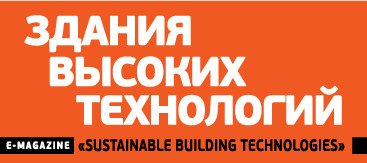 How Russia’s market is growing for sustainable construction skills, drivers, barriers and trends. Guy Eames reports on three aspects of еducation – awareness, university involvement and professional short courses.
How Russia’s market is growing for sustainable construction skills, drivers, barriers and trends. Guy Eames reports on three aspects of еducation – awareness, university involvement and professional short courses.
The Russian Federation and the ex-USSR are among the best-educated countries globally and remains so today (OECD, 2013). However in the newly forming sector for sustainable construction, there are understandably insufficient numbers of specialists on the market.
This is in sharp contrast to the situation in many other developed countries where green building is a hot topic and courses have been available for many years for architects, engineers and in many humanitarian disciplines.
Looking at the situation in Russia there are three main factors explaining the difference.
Demand – until recently the demand for multi-disciplinary specialists in the field of sustainable construction simply did not exist. Such specialists in the Russian labour market could not find employment – they were either foreign trained or self-educated. The first “sustainable” building projects in Russia being certified in 2010 (GBCI, 2010). It must be remembered that Russia is an energy superpower and that in the 1990’s the transition to market economics was so intense that “sustainability” only arrived after the new economic landscape was formed.
Educational providers – green building is a multi-disciplinary approach. This requires skills ranging from energy management (reducing demand, renewable energy, energy modeling and management) to design (passive principles, orientation, ultra airtight envelope), water management (reducing demand, rainwater harvesting, water management), right through to working with different types of construction materials, designing different types of working places and living quarters.
These type of courses were founded, in western countries, arranged by the most progressive institutions or forward thinking people. In the UK centres like the Centre for Alternative Technology, which has been working for 40 years (CAT, 2014) offering practical courses in passive technologies, the United States Green Building Council (USGBC) which has been offering such courses for the last 20 years and now has educated over 200,000 professionals. In RF the first courses were offered in 2012 by RUDN (People’s Friendship University of Russia) and RuGBC (RuGBC, 2012), the Green Development Forum (GDF, 2012) started to specialise in courses for Green Building in 2013 and has so far educated over 300 professionals in short courses.
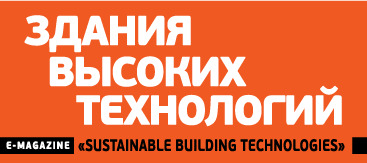
Triumph Park, St. Petersburg
Awareness – whilst there was not a professional demand and courses were scarcely available, the idea of a future green building market only really started after 2010 with the founding of several periodicals and ABOK cofounded the Green Building Council (RuGBC).
Awareness is the key to founding a new industry. Awareness of the technologies, benefits and opportunities. On the one hand, the potential for green building is skyhigh – 40 % of primary energy globally is used in buildings (WBCSD, 2006) however so often this is ignored in our fascination for one type of renewable energy (eg solar) or focus on sorting of waste – elements of the overall sustainability equation.
Since 2009 the author has been involved in raising awareness for green building. At this time three individuals – Professor Tabunchikov, President of ABOK and Alexey Polyakov from prosperity Project Management and the author, Guy Eames founded the Green Building Council Russia – which joined a global movement (now totaling over 100 councils) for change towards green building adaptation. Council members include major property developers and investors such as Mirland Development – which has developed Europe’s largest ecohousing complex – over 1 000 000 m2 in St. Petersburg (Triumph Park, BREEAM). These new “green buildings” complimented those, which had focussed on energy efficiency until that date. Commercial property developers such as Hines Inc. announced that all their Russian properties were to be “green” – developing stylish retail parks such as Belaya Dacha (BREEAM), after certifying the first Moscow office building (Ducat Place III). Examples of
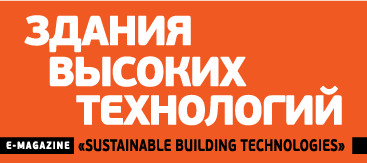
Ducat Place III, Moscow
Industrial facilities such as SKF (Tver, 4,000 m2, LEED) or the latest Oriflame Cosmetics Distribution Centre (40,000 m2, LEED, Moscow Region) show dedication from manufacturers to the principle of sustainable development.
Each of these projects (around 100 total registered or certified to international standards such as LEED or BREEAM) serve to raise awareness for green building – as case studies for students and industry specialists alike.
Previously the only green buildings that could be visited first hand, were those in other countries on Green Building Tours. GDF organised tours as far away as Masdar City (Abu Dhabi) to show what Green Buildings look and feel like when completed.
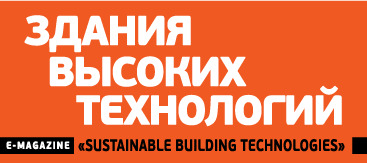
Masdar City, Abu Dhabi
For the last four years Russian group have been visiting and presenting in International green building events – the largest being EcoBuild (London, March each year, approx. 60,000 participants), Greenbuild in the USA (each year a different city, approx.40,000 participants) and Consensee (Stuttgart, 10,000 participants). Many of the exhibitors are also present on the Russian market, however they were often not focussed on “sustainability” as a sales tool. This is starting to change.
Companies like Interface Floor and Knauf are now starting to use their environmental credentials. Many of the RuGBC members are suppliers of various technologies, varying massively in their applications. 3M for example manufacturers a fire suppressant which is thousands of times less harmful to the environment than traditional suppressants, more obvious applications such as LED lighting are prominent as are an increasingly large number of nanotechnologies – Rusnano as their standard bearer.
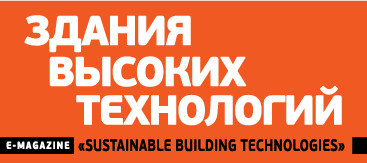
Hypercube, Skolkovo, Moscow
Several progressive Universities have shown an interest in green building courses for their students since 2010.
The pioneers were the Peoples’ Friendship University of Russia, which has a run a special course for three years and MGIMO, which includes green building in its ecological courses. More recently Skolkovo (itself based in the Hypercube – the first LEED certified university building) and Russia’s greatest civil engineering university – MGSU (Moscow State University of Civil Engineering) has now started to bring together their many engineering disciplines towards an integrated approach. The Green Building Laboratory for example is unique world-wide.
Other colleges such as Moscow Architectural Institute and Strelka Institute have likewise featured sustainable architecture and urbanism as a key theme with frequent exhibitions and interaction with the Union of Moscow architects and Green Project – a travelling exhibition for sustainable design which has toured Russia.
There have been many exciting success stories following the 300 and more specialists who have taken courses in BREEAM, LEED or DGNB in Moscow, St. Petersburg or Sochi. Courses are from one-three days and aim to prepare participants to become international assessors. The Green Building Forum (GDF) has partnered with RuGBC to become the largest provider of such short courses.
Dozens of the participants have later become certified to assess projects and have indeed become the main assessors for new projects in Russia (previously projects were assessed by foreign specialists). Although not cheap and in English, these courses are popular and successful.
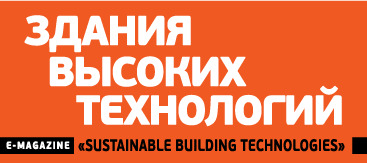
Oriflame Cosmetics Distribution Centre, Moscow Region
The green building industry worldwide is fast growing – one of the fastest in fact.
There really is no “way back”, not a trend but a new philosophy, a better way to design, construct, operate and then dismantle places for people to live, work, play, and shop. As studies prove that green building makes sense in Russia and the Government agencies start to dictate that new buildings be built to green building standards, more and more specialists will seek the knowledge and credentials needed.
It is likely that within two-three Moscow State University of Civil Engineering years dozens of courses at universities will appear and that those professional courses which are based around standards, will expand and diversify, particularly as standards are customised and adapted into Russian language. As green building enters the mainstream in Russia – a new Age Dawns.
The author is co-founder and CEO of the Green Building Council Russia (www.rugbc.org). Born in the UK, Guy has lived in Russia for over 20 years and has a Russian wife. ●